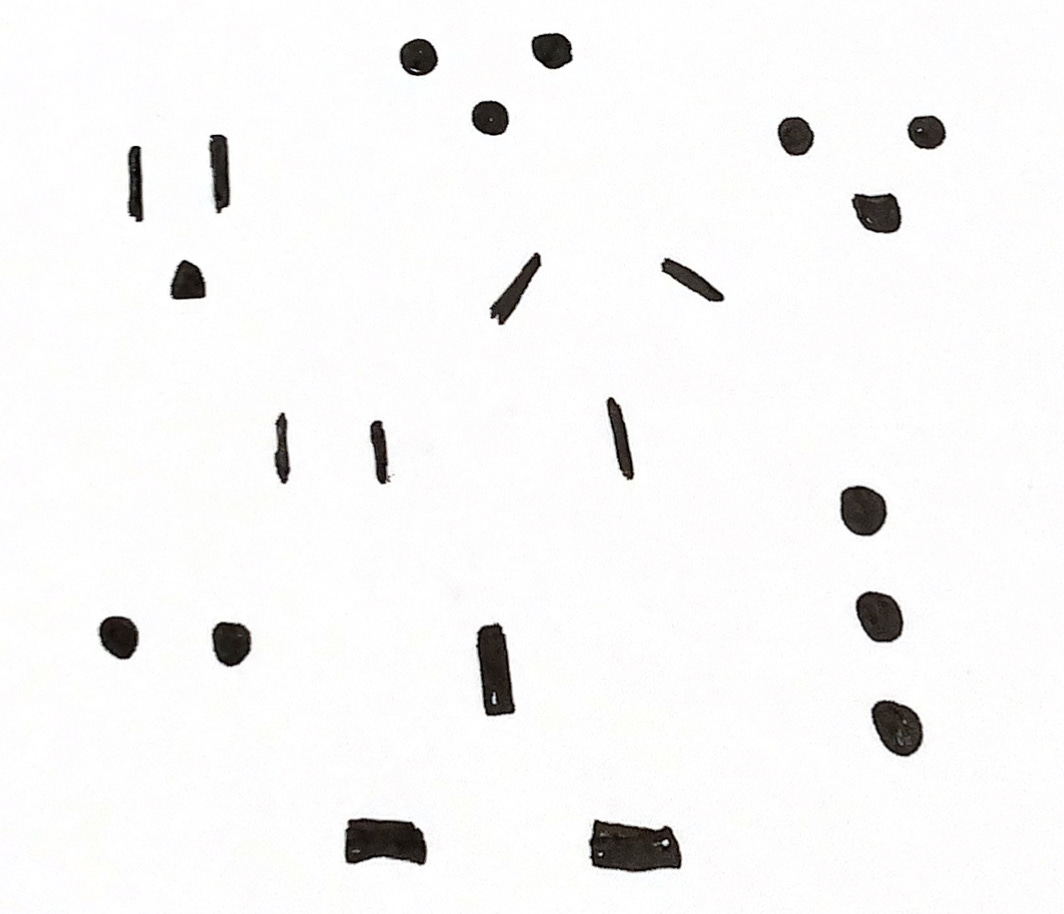On Uniformity
The flip side of the coin of diversity is uniformity, which can be good for many reasons 🔌
Hi all!
Welcome to issue #24 of Light Gray Matters and #5 of my exploration of diversity, variety, heterogeneity, multiplicity, and any number of other diverse/various/heterogeneous/multiple synonyms to express this same idea.
Today, we flip the coin and examine the opposite of that: uniformity.
At the risk of stating the obvious, uniformity occurs when everything in a system is the same along some dimension. In a group of people, that could mean everyone belonging to the same ethnicity, or having the same political opinions, or speaking the same language. In architecture, that could be having the same style all over a city. In the underlying fundamental nature of reality, that could be having almost everything be made of the same type of subatomic particles.
We saw in my post about colored dots that uniformity is interesting when it contrasts with diversity. Amidst a sea of chaos, an island of calm and order is attractive — because it creates diversity at a different level.
But let’s examine uniformity by itself, without any mention of levels or contrasts. When or why would uniformity be desirable?
Suppose a genie asked you to grant some money to 10 people. Each person can receive at most $100, but you decide how much exactly; it makes no difference to you either way (you don’t get to keep any of the money). Suppose you read my newsletter and are convinced that diversity is good, so you decide to give them diverse amounts. One person gets $100. Another gets $78. A third person gets $11.45. One poor fellow gets $0.01, two people get $99.98, one gets $50, and the last three receive $33.33.
That sounds like a bad way to do it, doesn’t it? You should just give everyone $100. Who cares if it’s more uniform.
What happens in this highly realistic genie scenario is that one of the amounts is, clearly and unambiguously, a better option than anything else. If you’re able to provide everyone with the best option, it’d be bad not to, even in the name of diversity.1
Many types of diversity don’t involve such a clearly superior option. In biodiversity, no life form is better than the others; it would not be a better world if all life forms belonged to the same species. In art, some works like the Mona Lisa can be considered to be of superior quality, but there’s hardly anything more ambiguous than arguing about the relative value of various pieces of art. Besides, it would be a rather sad world if all the art we had were copies of the Mona Lisa.
But in other domains, things are rather clear-cut. Health is superior to disease, so a uniformly healthy population is better than a population harboring a diversity of pathogens and cancers and other conditions. The world’s political systems are more diverse thanks to totalitarian regimes like North Korea’s, but it’d be a better world if North Korea were to become a liberal democracy like most other countries.
The problem, as ever, arises in the grey zone.
There are situations where it seems like an option is better than the alternatives, but it later turns out we were mistaken. For example, suppose some physicians determine that giving Medicine X to kids makes them healthier; the authorities decide that 100% of the kids will get Medicine X; and then 30 years later it is proven that Medicine X increases the risks of heart disease or something. If we had been less uniform in the administration of Medicine X, the kids would have fared better.
This sort of situation is very common in politics. People tend to be quite certain of their political opinions, so they’d like them to be applied to society as a whole. At the extreme, some people would ban alternative opinions if they could, thereby ensuring perfect uniformity (at least in appearance). But this can be very problematic, as many authoritarian regimes have proven in the past. One of the fundamental values of a liberal democracy is to protect diversity of thought to avoid getting stuck in bad political situations, applied uniformly (as in, e.g., North Korea).
But let’s not get more political than this. You get the point: uniformity is good when the best option is clearly identifiable, but we must be careful with what “clearly identifiable” means.
Are there other benefits to uniformity?
Yes. One is in situations where holding to a standard is desirable. For instance, it wouldn’t be ideal if every house has its own kind of electrical outlets. It would, in fact, be very inconvenient. It’s already inconvenient to have to use adapters when traveling abroad, and one could argue that it would be better if the entire world used the same kinds of outlets.
(the worldwide diversity of outlets, shown on purpose to trigger your pareidolia)
A similar argument can be made for using a lingua franca like English: having a common language facilitates communication quite a lot.
Any single type of electrical outlet isn’t necessarily better than others. English certainly isn’t superior to other languages. But there is value in having most people use the same thing: it eases coordination. It makes it possible to reuse stuff from one situation to another.
More generally, uniformity minimizes surprise. It allows you to know what to expect.
When you travel to a different country and see a fast food chain that’s the same as in your country, you might be tempted to go there, because you might crave some familiarity. On this specific point I tend to value the opposite: if I travel, I want to go to the unique places, the ones that will surprise me most, that are different from home. But not everyone wants to be surprised, and not all the time.
This surface-level discussion of uniformity may have sounded a bit obvious. I don’t think there’s any super surprising insight here: everyone easily recognizes that uniformity can be good in some situations.
What I think people don’t recognize as much is the extent to which uniformity can be detrimental. My hunch is that we have a bias toward uniformity,2 perhaps because our brains like its simplicity. We are easily drawn to it. Which is why I want to spell out the advantages of the inverse force, diversity.
We’ll continue to explore that next Wednesday, until which I remain
Yours in upholding the highest newsletter standards,
Étienne
Real-life money questions are more complicated, of course. But in general, economic inequality is considered undesirable — most would agree that the world is better if everyone is as rich as they can be. There is, however, considerable debate around whether economic inequality is acceptable if it leads to more wealth on average.
Except for ethnic/racial diversity, due to intense political pressure on that front in recent years, at least in the Western world.






